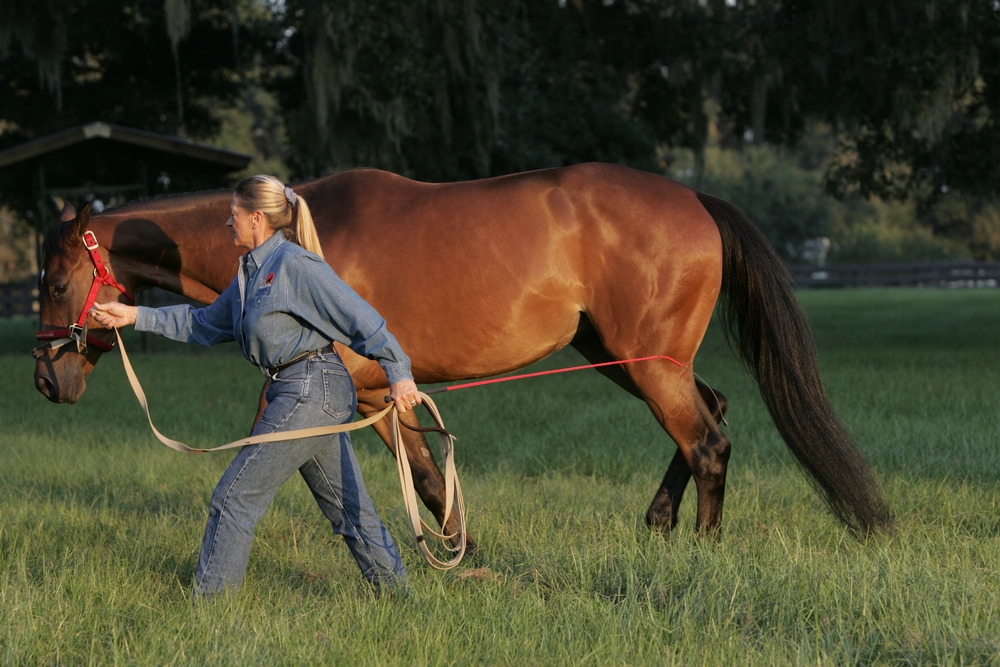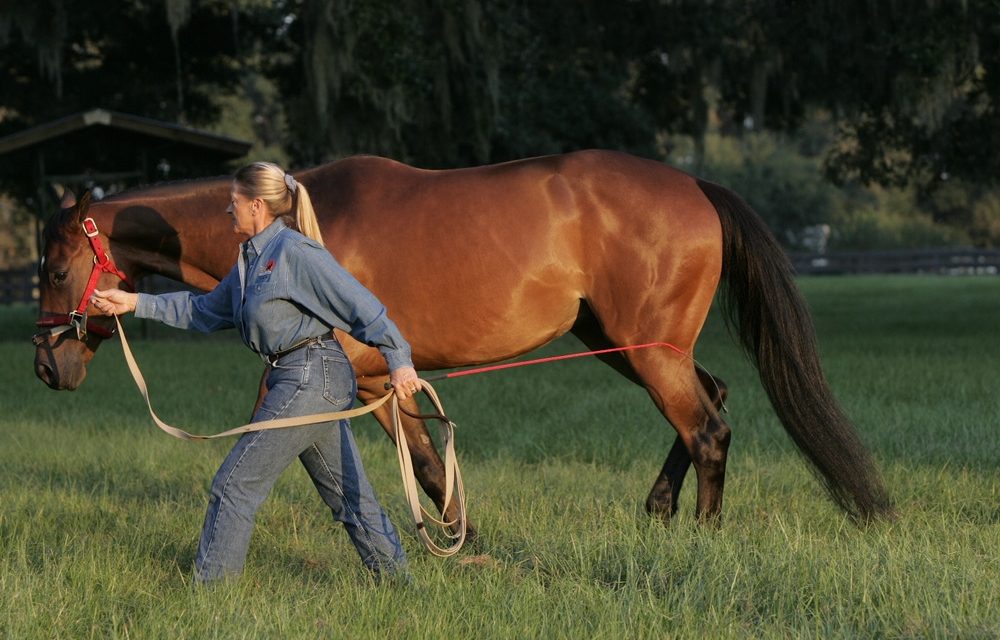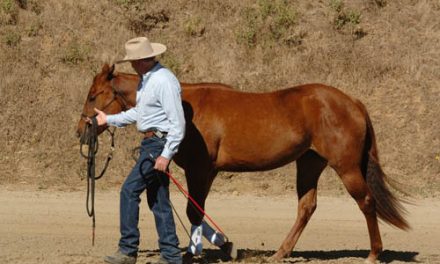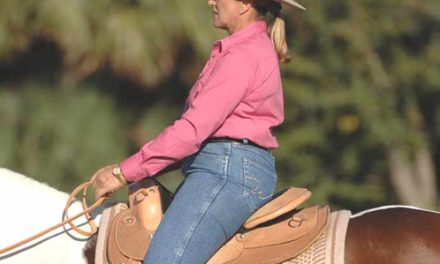Palm Partnership Training™
Building a Partnership with your Horse

No matter what your horse’s age, investing the time in ground training will make him a more
responsive, obedient partner. I’d like to share with you my “Golden Rules” for ground training
any horse.
Before beginning any ground training lesson, make sure you have set the foundation for success
we discussed in the “Beginning Ground Training” series. Go back and review them if you need
to. Here’s a quick summary.
Start with the proper equipment: a properly fitting halter, longe line with or without a “stud
chain”, leg protection, and a 3-4 foot dressage whip. I prefer using a longe line to a lead when
ground training horses and will use that term rather than “lead” throughout these articles.
Carefully select the training location. I recommend starting lessons in the horse’s stall or another
small, familiar enclosed area, no matter what the horse’s age. This will help him stay focused and
relaxed. As a lesson is mastered, your horse can graduate to repeating it in a slightly less secure
area like a paddock or round pen. Finally, create a written lesson plan for each training session.
Now that we have you and your horse properly equipped, here is my first “Golden Rule” of
ground training.
Golden Rule #1: Respect Your Position
The first golden rule of ground training is: You must make sure that your position in relationship
to your horse gives you safety and control. The most common problem I see are handlers not
positioning themselves properly. Always stand with your shoulder at the middle of your horse’s
neck. Never position yourself farther forward than his throatlatch (the area where his head and
neck meet) or behind his shoulder.
Standing too far forward, at the horse’s head or in front of his head, is an unsafe position. Even if a
horse is very quiet, a handler standing too far in front of a horse can be trampled if he spooks.
This position will cause you lose control of the horse’s head and neck. You will not be able to
encourage the horse to stay forward, but will use a pulling action to stay in control.
A handler should always stand at minimum distance of one arm’s length away from their horse.
The most common fault is standing too close. This unsafe position increases the handler’s chance
of being hit by the horse’s legs or stepped on. I’ll never forget my first instructor telling me: “if
you get stepped on by a horse, it’s your fault for standing too close.”
The handler’s hand position controls the horse’s head–and this is the most important part of the
horse to control! Whether the handler is standing on the near (left) or off (right) side of the horse,
the hand closest to the horse holds the longe line attached to the halter. If the handler is standing
on the horse’s near side, it will be her right hand; if standing on the off side, it will be her left
hand. This hand should be positioned at the middle of the horse’s head, below the jaw and above
the mouth. The other hand holds the excess longe line in organized, loose coils.
Grasp the longe no closer than 5 inches from the halter. This arm should have a slight bend at the
elbow for flexibility. A common problem is holding the longe too tight or too close to bottom of
the halter, and steering the horse from underneath his head. As an instructor, I have found that the
hardest thing to teach people is that that they do not need to stand underneath him to control and
force their horse with a lot of pulling action.
As your handling skills advance and your horse’s training improves, the further away you will be
able to hold the longe from him and still get the desired response. Your goal should be to
successfully execute basic ground training movements with at least 3 feet between your contact on
the longe and your horse. This takes time and practice, but it is great test of responsiveness and
obedience
While working on achieving this distance, your horse may try to come toward you, crowding your
space. If this happens you can use your arm in an action to shake the longe toward the horse to
encourage him to maintain the desired space. I’ll teach you more about this training technique in
upcoming newsletters.
From a reader:
I received this e-mail message from a newsletter reader. With April’s permission I would like to
share it with you.
My name is April. I have ridden since I was 5 years old, owned and trained
my own horses since I was 12. At 20 years of age I thought it would be great fun to raise and
train a young horse. I figured I had plenty of experience retraining my older horses, so how hard
could it be to start from scratch? SO I dove in….trading my best AQHA mare for an AQHA colt I
had only seen via Internet.
I began ground training him at 2 years old. He excelled at ground training so fast that by the time
he was 2.5 I thought I could ride him easy enough. So I climbed aboard and was surprised to find
a totally different situation. This is when I realized I needed help. I sent him to sixty days training
at a local barn. But when I got him back he was not the willing and eager horse I knew he was
before.
That night I went through all my old horse magazines and ran across Lynn Palm’s Longevity
Training series in a magazine. I became immersed in the articles and read them over until I knew
exactly what to do. I began a thorough retraining of my horse. Immediately I saw his willingness
to learn come back to life and a total enjoyment of working.
Lynn’s series has helped me so much in training my horse and I owe her a great gratitude for it.
Now I am working on improving my seat so I can ride and train him better using her techniques.
It just keeps getting better and better! —-April
Thanks, April, for your support of Palm Partnership Training. Your willingness to learn and
positive attitude tell me that you and your horse will achieve the long lasting partnership we all
want with our horses. I look forward to the day that you can come and ride with me!
Your Next Step…
Be patient. Ground training takes time. You may spend several days or weeks on one lesson.
Make your sessions short to keep your horse’s attention and try to end on a positive note. Rushed
or impatient handling now will affect future training sessions.
Ground training is not mentally or physically fatiguing for a horse so it is something you can do
every day–if you keep the lessons short and interesting. It is a must for young horses. For older
horses it can give good variety to your schooling and give you another opportunity to spend time
together. So practice!
Reward any progress your horse makes. Praise him with your voice. If your horse is not used be
being petted, start by gently touching him. Once he accepts a touch, try stroking him on his neck,
then along his back in the direction that his hair is growing. Graduate to gently petting him.
Horses usually love to be stroked on their foreheads! A carrot treat and brushing after the lesson
will make your horse look forward to the next lesson. That’s the most important “Golden Rule”
for success in building a partnership with your horse.
Lynn
For more information, please call 1-800-503-2824 or visit www.lynn palm.com.
Lynn Palm
Royal Palm Ranch, LTD.
9445 NW 60th Ave.
Ocala, Florida 34482
352-629-3310 – Phone/Fax
800-503-2824





